How To Paint Garden Furniture

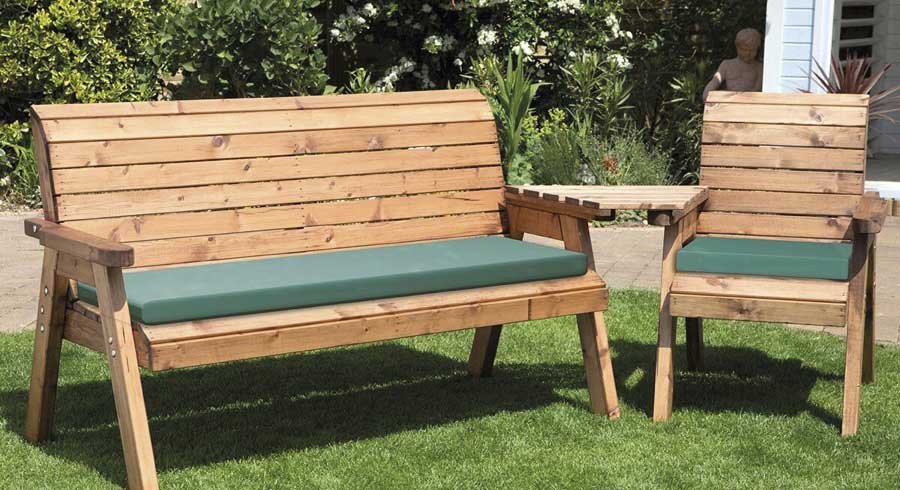
Ensuring you give the right amount of paint TLC and maintenance to your garden furniture will save you the hassle of replacing old weathered furniture or having to constantly touch it up every year. There are many things to consider before you reach for the paintbrush! Whether you’re painting metal or wooden garden furniture or having a transformation, you must pick suitable outdoor furniture paint and carry out the right process for a successful job. As a result, you’ll be able to enjoy long-lasting painted garden furniture.
Follow our handy guide below to accomplish the best results. We also share helpful recommendations from our Senior DIY Buyer Andrew Georgiou about the best paint for both wooden and metal garden furniture.
What garden furniture paint colour to choose?
Choosing a colour will depend on the finish of the wood, style, and what you’re hoping to achieve - a complete makeover or a simple freshen up.
Base shades like brown, black, grey, or white are traditional colours making them popular choices. These are perfect if you want a subtle look and calm feel for your garden - and are also a great choice to use on furniture that has become tired, worn, and dull over time. On the other hand, if you’re looking to keep your wooden garden furniture natural, opting for an oil or a varnish will enhance it and emphasise its natural style and finish. Most oils and varnishes are clear, perfect for restoring furniture.
Over the past few years, bright paint colours have become very fashionable, bringing your outdoor living space to life. Creating vibrant contrasts and breathing inspiration into your garden, giving you the freedom to match your furniture with your desired garden theme. Whether you want to use an electric blue to invoke a traditional Greek feel or yellows, oranges, and pinks to recreate a Cuban vibe, the choices are endless. Bringing the indoors outdoors can sure be achieved with bold garden furniture paint.
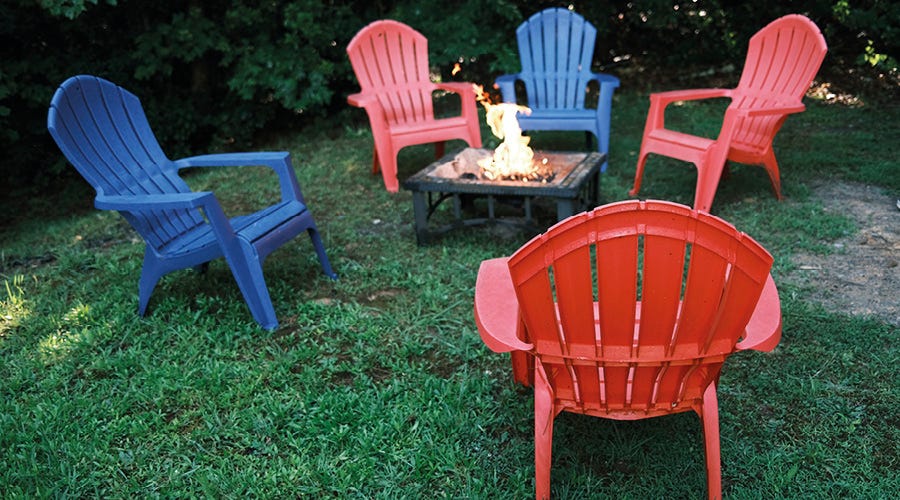

Painting
Ensure you have the appropriate paintbrushes to carry out a seamless job. Opting for smaller paintbrushes will work best for painting the legs of benches, tables, chairs, and those intricate details of hammocks. While a medium or larger brush should be used for the overall painting of your garden furniture. This type of brush will also make it easier for painting the likes of bigger furniture like your garden dining set or garden bistro set.
Rollers are better to use on tabletops or base of chairs, with the application being easy and much quicker compared to a paintbrush.


How to paint wooden garden furniture
Preparing and patching up damaged wood
Firstly, don’t attempt to paint over damaged wood as it won’t look appealing. The secret to a fine finish is to dedicate your effort to wood preparation before painting. Put your DIY skills to good use and save money while you do it.
- Using a stiff wire brush, scrub any visible chipped or dented wood, holes, or cracks to remove any loose paint or wood chips.
- Apply waterproof glue to any splintered pieces and allow them to dry.
- With a putty knife, add wood paste filler to the damaged area, ensuring you spread it evenly to cover the whole area.
- Smooth down the wood filler until it is flush with the wood surface, leaving it to dry overnight.
- Sand the patch gently using sandpaper, focusing on the edges to make the patch look less visible
- Finally, wipe off the sanding residue with a damp cloth and let it dry before you start the rest of the sanding and priming.


Sanding & priming
The next stage is sanding and priming which will determine the overall look and finish.
- Sand the rest of the wood carefully to remove any flaking paint, or even old paint drips. Use a sanding machine or choose from 100-, 120- or 180-grit sandpaper, depending on the level of sanding needed. Tip: Remember grit coarseness decreases as the number of the paper increases, so if you’re choosing 100-grit sandpaper, it will be much coarser than opting for 180-grit sandpaper.
- Use finer sandpaper to tackle those narrow spaces and tricker areas.
- Remove all dust using an old cloth or paintbrush when the sanding is complete.
- Apply one coat of exterior primer and allow it to dry. We recommend 8 hours of drying. Tip: Apply strokes in the same direction as the wood grain for a smooth finish.


Painting
The final and fun part of the job is the actual painting, well at least we think so.
- Ensure you have the appropriate paintbrushes for the task. Using small, thin ones is ideal for painting those intricate details and harder-to-reach spots while big ones will work for the main areas. A roller is perfect for painting tabletops and seats, making the job easier.
- It’s best to start painting the bottom of your furniture first. Simply turn it over, use one coat of exterior paint and let it dry. Give it a few hours to dry before checking it for any additional touch-ups, before turning it upright.
- Paint the rest of your garden furniture. Remember the darker the colour of the wood, the more coats it will require. Tip: When painting wood, several thin coats of paint are better than one thick one.
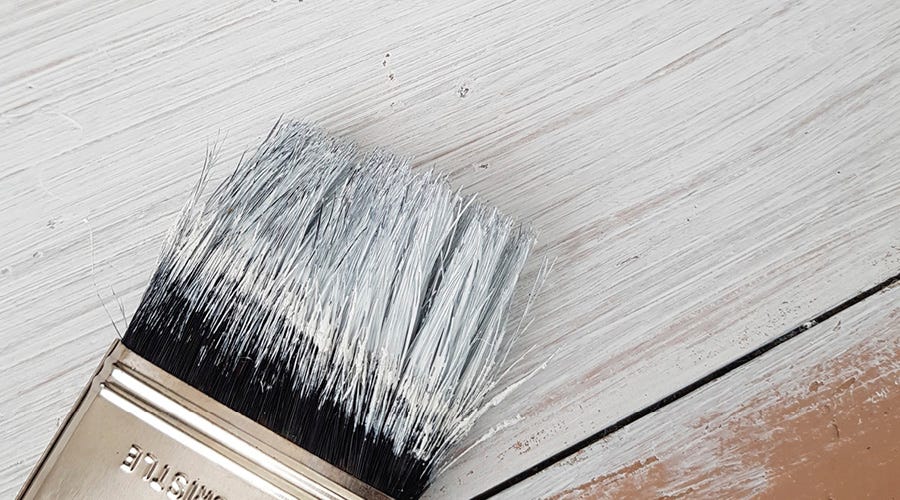

What is the best paint for wooden outdoor furniture
When choosing garden furniture paint for your wooden furniture, there are four types to consider - stain, oil, varnish, or paint.
- Oil - this is ideal for use on hardwood furniture as the oil will hydrate the wood’s fibres, adding extra protection to the furniture and emphasising its natural style. It’s important to note that oil won’t change the colour of the bench; it just restores its condition.
- Varnish - it adds a solid protective film to the wood and is better at protecting wooden garden furniture from moisture (ideal if your garden furniture is left outside in the rain). This extra protection is needed for softwoods. Varnishes are mainly clear finishes like oils, as they enhance the natural colour of the furniture.
- Stains - are similar to regular paints in that they add colour to your furniture, but they soak into the surface of the wood to preserve and not alter its unique patterns and texture. They provide rich colour while giving the hardwood a soft tint.
- Paint - allows you to completely transform the look of your furniture with dark and bright colours as the paint has pigment. Using paint means the focus is on the colour as opposed to the texture and natural finish of your wooden furniture.


1. Cuprinol Ultimate Furniture Oil - 1L - £15.99
2. Cuprinol Garden Furniture Restorer - 1L - £9.49
3. Cuprinol 750ml Garden Furniture Stain - Oak - £15.99
4. Cuprinol Hardwood Teak Oil Spray - 500ml - £9.49
Advice from Andrew Georgiou - "Always choose a good quality paint and ensure you read the instructions on how best to prepare the surface before painting. It's always best to apply a few finer coats rather than one coat applied heavily. Remember to place the wooden garden furniture on a dust sheet to protect your garden floor.
Preparing the woodwork before painting is key! If the wood is rotten or soft then this should be repaired before painting. Wash the bare wood with warm soapy water and allow it to dry thoroughly. Also, remove any mould or algae.
How to paint metal garden furniture
There are a few steps to follow before diving straight for your paintbrush to ensure you do a top job.
- Check all bolts in your table and chairs, you’ll need to replace any missing ones or rusted ones. Use WD40 to release any ones that are very tight and failing to come out with your spanner. Tip: Try to avoid using a hammer to remove stubborn bolts as it will break the corrosion binding the nut and bolt together. If needed, use a hacksaw instead to saw through difficult nuts and bolts.
- Wearing high-quality rubber gloves, apply sterilising solution to the furniture to kill off algae and spores using a brush or a sponge. Leave this on for 24 hours before washing it off with clean water.
- Use a steel brush or a scraper to remove any loose and flaking paint so the surface is clear for a new coat of paint. Tip: Placing a cloth sheet or piece of plastic sheeting underneath your furniture will make cleaning up easier.
- If the tabletop is in a bad state with a huge amount of paint worn away and the metal has been exposed, sanding is needed. Using a sanding block with wet and dry abrasive paper, work on this exposed area. Keep sanding until a firm base is reached. We recommend wearing a protective face mask.
- Scrub your furniture with hot water and detergent to remove any traces of grease and dust particles. Rinse with lots of clean water and soak up any excess water with a sponge. Leave to dry completely before moving onto the next step.
- A primer should be applied first before painting, especially if your metal furniture is aluminum or an aluminum alloy. However, there are specific ranges of paint that can be applied directly onto bare metal garden furniture.
- Start painting, after the first coat is completely dry, give it a very light sanding with fine glasspaper to ensure it is ready for the next coat of paint.
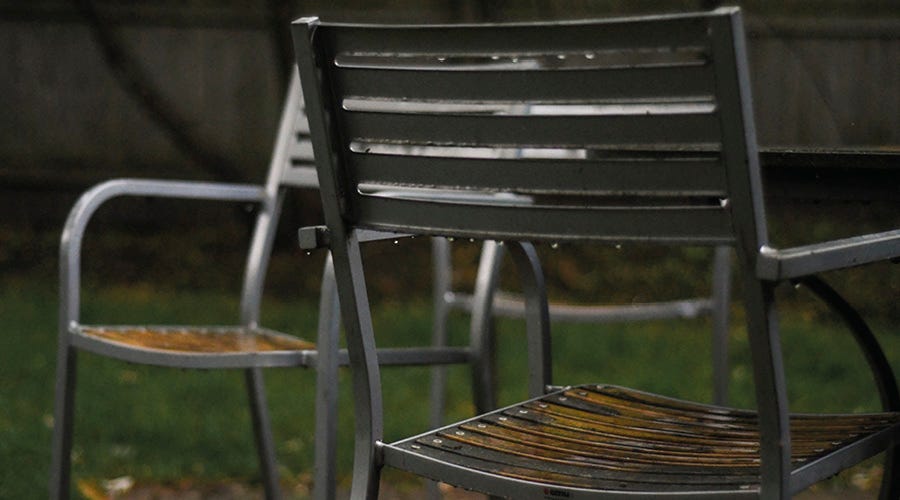

What is the best paint for metal garden furniture
There are a few options for painting steel garden furniture. Depending on the condition of your furniture or what metal paint you choose, using a primer is not always needed before you start the paint job! However, a primer should be used if the metal has come into contact with moisture or it has been untreated.
- All in one metal paint - this serves as a primer, undercoat, and topcoat. This is ideal if want to get the paint job done quickly.
- Direct to metal paint - this allows you to paint directly onto non-rusting metal such as galvanised steel, aluminum, copper. It performs as a primer and a topcoat.
- High-quality oil-based spray paint - this is designed to prevent metal furniture from rusting. Spray using a back and forth motion, holding the can far enough away for a consistent spray pattern to avoid drips and overspray. Follow the natural lines of the chair to coat it evenly.
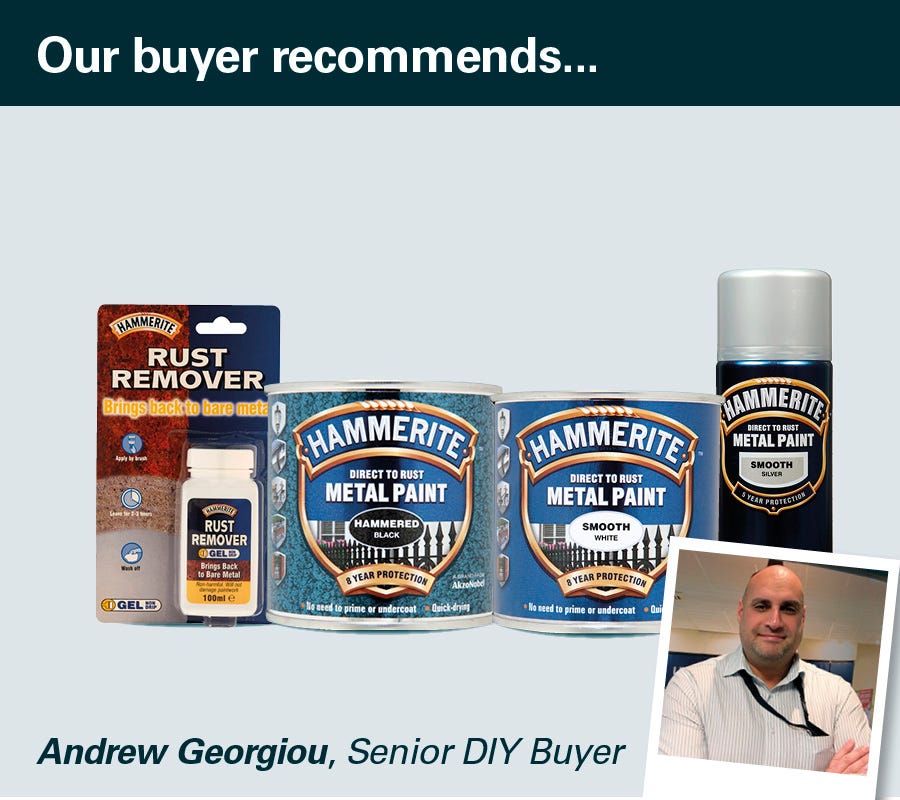

,1. Hammerite Rust Remover Gel - 100ml - £6.29
2. Hammerite Direct To Rust Metal Paint in Black - 250ml - £11.99
3. Hammerite Direct To Rust Metal Paint in Smooth White - 25ml - £11.99
4. Hammerite Metal Paint Aerosol in Smooth Silver - 400ml - £13.99
Advice from Andrew Georgiou - "The advantage of using aerosol paint is a more even coverage without brushstrokes, plus it can make applying the paint quick and easy without the need for a brush but make sure you cover any surrounding areas. However, many customers prefer to use paint rather than an aerosol as you have more control with a brush and it's less messy. Plus, with paint, it's easier to reach those intricate details of furniture using a brush."










